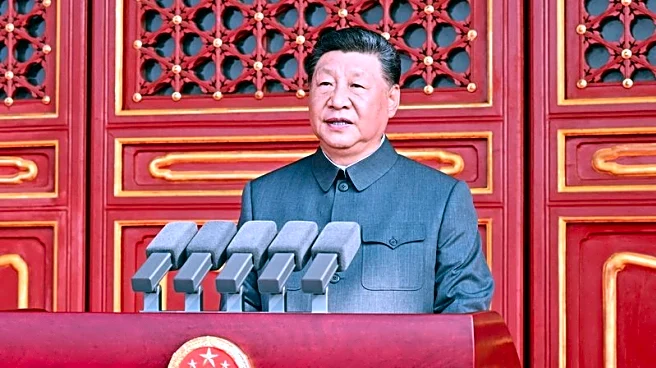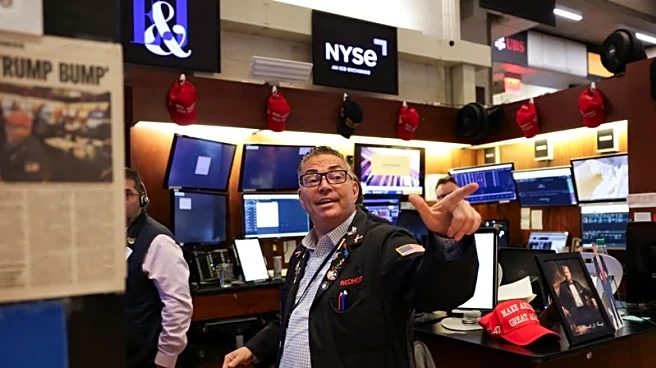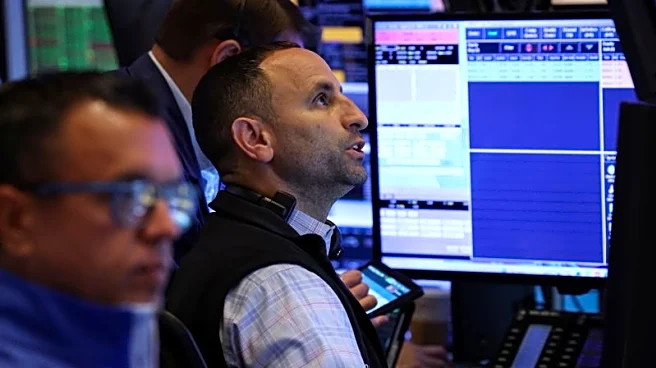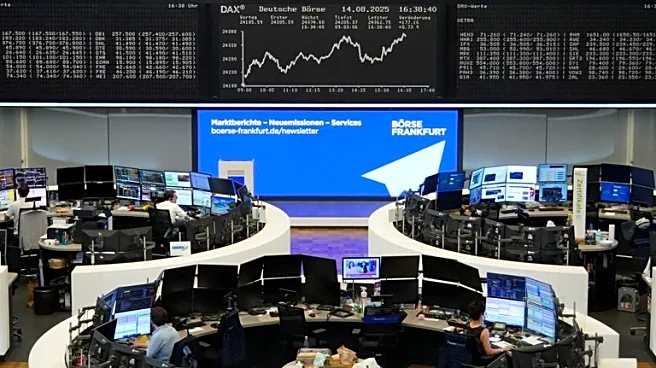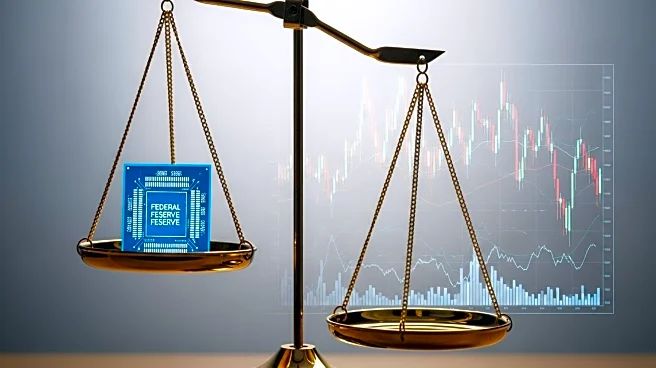What's Happening?
Gold prices have surged to a record high, exceeding $3,500 per ounce, marking the strongest weekly gain in three months. This increase is driven by expectations of a Federal Reserve interest rate cut, which traders believe will be confirmed by the upcoming U.S. non-farm payrolls report. The report is scheduled for release at 1230 GMT, and its results could solidify the market's anticipation of a rate cut in September. Spot gold rose 0.3% to $3,554.80 per ounce, with prices up 3% this week, reaching a peak of $3,578.50 on Wednesday. The rise is attributed to a combination of rate cut bets and safe-haven demand amid global geopolitical and economic uncertainties. U.S. gold futures for December delivery also saw a slight increase, gaining 0.1% to $3,610.30.
Why It's Important?
The potential Federal Reserve rate cut is significant as it could influence investor behavior, particularly in the gold market. Gold, which does not yield interest, becomes more attractive when interest rates are low, serving as a refuge for investors during times of uncertainty. The anticipation of a rate cut reflects broader economic concerns, including geopolitical tensions and the independence of the Federal Reserve, which has been under scrutiny following President Trump's attempts to influence its decisions. The outcome of the U.S. jobs report could further impact market expectations and investor strategies, potentially leading to continued volatility in the gold market.
What's Next?
The release of the U.S. non-farm payrolls report will be a critical factor in determining the Federal Reserve's next steps regarding interest rates. If the report supports the case for a rate cut, it could lead to sustained high gold prices and influence broader market trends. Analysts suggest that while gold prices may consolidate due to profit-taking, new highs are possible in the coming months. Additionally, geopolitical developments, such as President Trump's comments on international relations, could further affect market dynamics and investor sentiment.
Beyond the Headlines
The situation highlights the complex interplay between economic policy, geopolitical factors, and market behavior. The Federal Reserve's independence is a crucial aspect of this dynamic, as political pressures could impact its decision-making process. Furthermore, the global economic landscape, including relations between major powers like China, India, and Russia, adds another layer of uncertainty that investors must navigate. These factors underscore the importance of monitoring both domestic and international developments in shaping financial markets.




